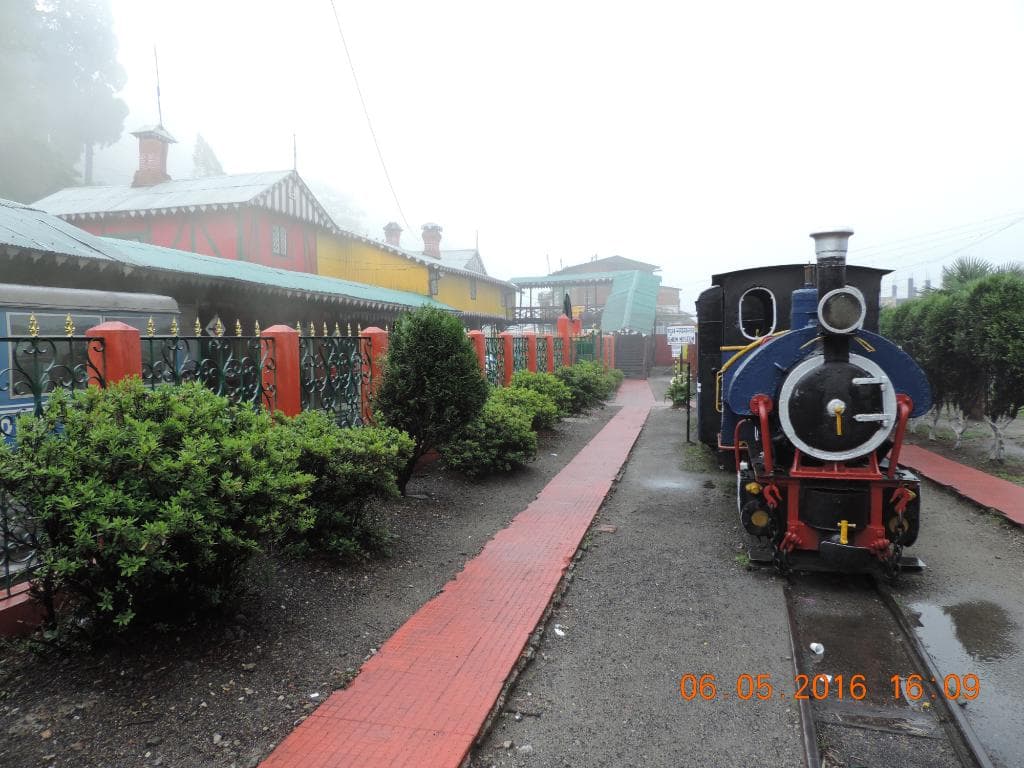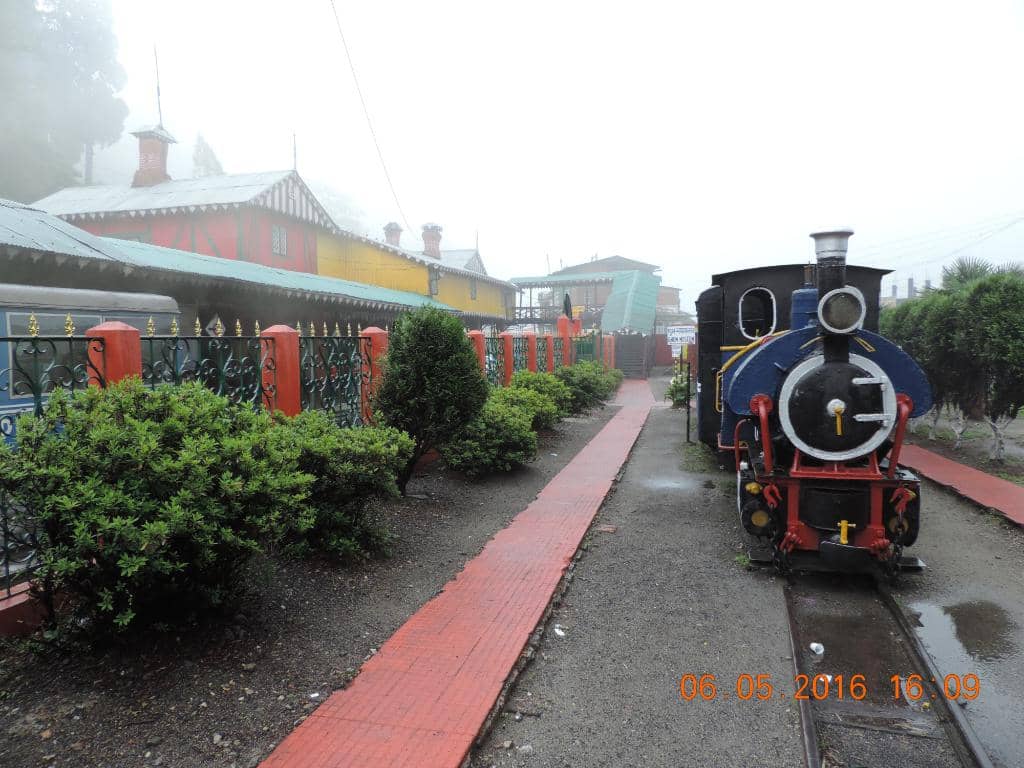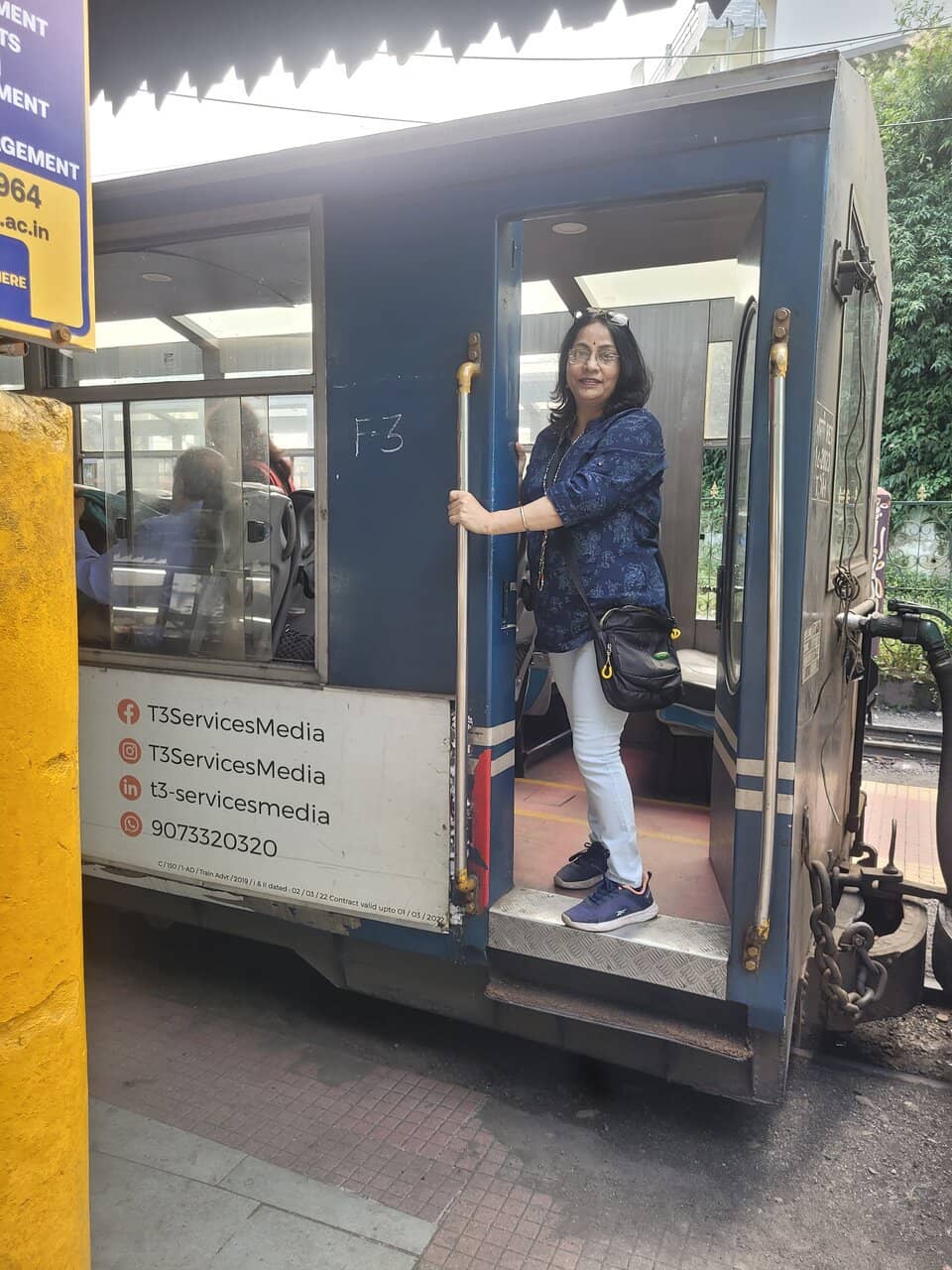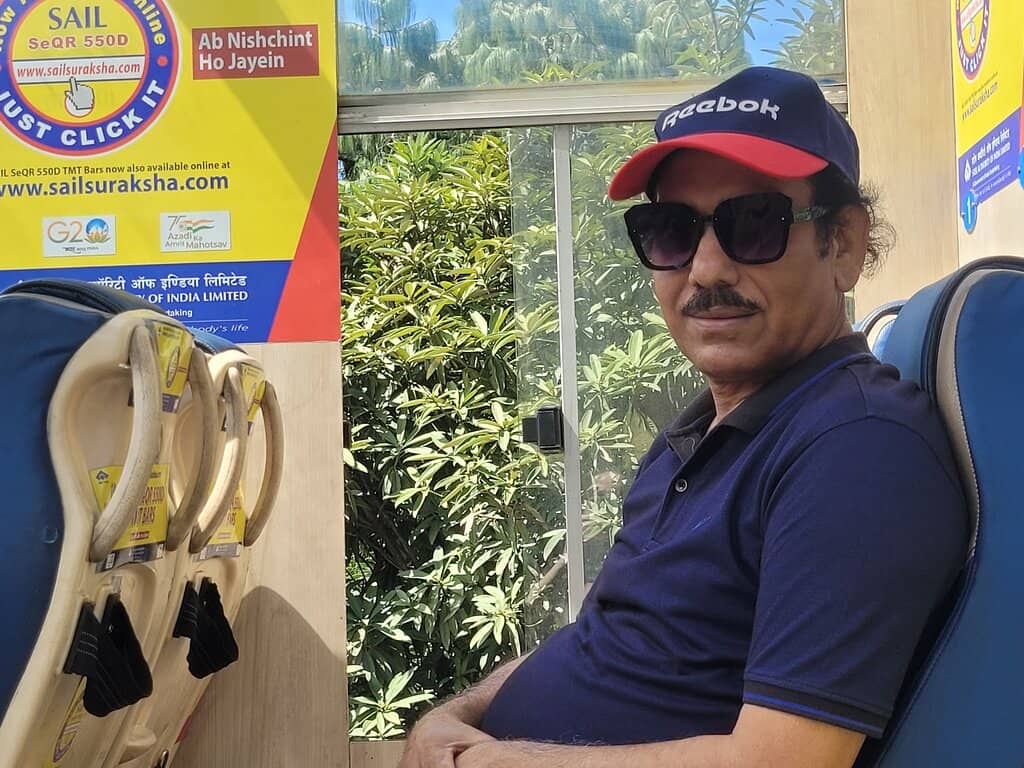
Darjeeling Himalayan Railway Ghum Museum
Explore the rich history and engineering marvels of the Darjeeling Himalayan Railway at the Ghum Museum, the highest railway station in India.

Highlights
Must-see attractions

Social
From TikTok & Reddit
Best Time
Integrated experience

Darjeeling Himalayan Railway Ghum Museum
Best Time
Integrated experience

Highlights
Must-see attractions
Explore the rich history and engineering marvels of the Darjeeling Himalayan Railway at the Ghum Museum, the highest railway station in India.
"A must-visit to truly appreciate the glorious past and engineering of the Darjeeling Himalayan Railway."

Book Toy Train Tickets Early
Secure your spot on the popular Darjeeling Himalayan Railway joyride, which includes a stop at Ghum Museum.
Allow 20 Minutes for Museum
The toy train typically stops for 20 minutes at Ghum station, perfect for a quick museum visit.

Highlights
Discover the most iconic attractions and experiences

Vintage Locomotives and Wagons
Museum Grounds
Explore a collection of old wagons and engines, silent witnesses to the DHR's storied past across steep Himalayan terrains.

Miniature DHR Replica
Museum Interior
See a detailed miniature replica of the Darjeeling Himalayan Railway, including its iconic blue steam engine and the Batasia Loop.

Historical Photographs
Museum Gallery
Gaze upon rare original photographs showcasing the DHR's construction, steam engines, and the misty mountain landscapes.
Plans like a pro.
Thinks like you
Planning Your Visit
Timing Your Visit to the Ghum Museum
Getting to Ghum Station
Best Times
Insider Tips
from TikTok, Instagram & Reddit
Book Toy Train Tickets Early
Secure your spot on the popular Darjeeling Himalayan Railway joyride, which includes a stop at Ghum Museum.
Allow 20 Minutes for Museum
The toy train typically stops for 20 minutes at Ghum station, perfect for a quick museum visit.
Explore Beyond the Museum
Ghum station is near Ghum Monastery and the Batasia Loop, worth exploring if time permits.
Entry Fee is Minimal
The museum entry ticket is very affordable, around ₹20, making it a budget-friendly attraction.
Tips
from all over the internet
Book Toy Train Tickets Early
Secure your spot on the popular Darjeeling Himalayan Railway joyride, which includes a stop at Ghum Museum.
Allow 20 Minutes for Museum
The toy train typically stops for 20 minutes at Ghum station, perfect for a quick museum visit.
Explore Beyond the Museum
Ghum station is near Ghum Monastery and the Batasia Loop, worth exploring if time permits.
Entry Fee is Minimal
The museum entry ticket is very affordable, around ₹20, making it a budget-friendly attraction.
What Travellers Say
Reviews Summary
Visitors praise the Ghum Railway Museum for its rich historical content and well-preserved artifacts, offering a deep dive into the Darjeeling Himalayan Railway's legacy. The museum's affordable entry and its integration with the popular toy train joyride make it a highly recommended stop for understanding the DHR's engineering and heritage. Some find it a bit small, but its educational value is consistently highlighted.
"The Ghum Railway Museum, located right next to the historic Ghum Railway Station — the highest railway station in India — offers a fascinating and detailed look into the glorious past of the Darjeeling Himalayan Railway (DHR). For anyone visiting Darjeeling, this museum is a must-visit to truly appreciate the rich legacy of the toy train. As you step into the open grounds of the museum, you're welcomed by several old wagons that were once used for goods transportation along the DHR line. Each wagon stands as a silent witness to the countless journeys made across the steep Himalayan terrains. Informative signboards around the premises narrate the story of how the DHR was constructed, the challenges faced by the engineers, and the significance of Ghum station being situated at such an incredible altitude compared to sea level.
As you move indoors, the museum beautifully unfolds the entire timeline of the DHR, starting from the 1840s when the idea was first proposed during British rule. Large, well-detailed boards explain every phase of its construction — right from inception to the present day. Visitors can learn about the major milestones, such as the unfortunate loss of the DHR arm to Kalimpong due to devastating natural disasters. This lost branch serves as a reminder of the vulnerabilities faced by mountain railways. A special section is dedicated to explaining the brilliant engineering techniques like the loops and Z-reverses, which were specially designed to tackle the steep slopes. Detailed boards provide information about each station along the journey to New Jalpaiguri (NJP), with elevations, historical facts, and rare old photographs making it an enriching experience.
Adding to the charm, the museum houses original railway artifacts used during the 19th and 20th centuries, offering a real sense of how rail travel was once managed. There's even a miniature replica of the DHR, complete with its famous blue steam engine that has become a symbol of Darjeeling itself. Visitors can also see a detailed miniature of the famous Batasia Loop, which is an engineering marvel. What’s most captivating is the gallery of rare original photographs — from early construction days, images of the steam engines chugging through misty mountains, to recent images of the steam loco shed at Darjeeling. These photos give you a sense of the hard work, innovation, and sheer determination that went into building this UNESCO World Heritage marvel.
Overall, the Ghum Railway Museum is a beautifully curated tribute to one of India's most historic railways. It offers an immersive journey into the past, connecting visitors with the spirit of exploration and adventure that the DHR still represents today. Whether you're a history buff, a train enthusiast, or simply someone curious about Darjeeling's heritage, this museum promises an experience that is both educational and deeply moving. Make sure to visit and witness firsthand the incredible story of the DHR — a railway that not only conquered mountains but also won hearts across generations."
Ronit Gaikwad
"Some interesting collections and good to know stuff that showcases classical engineering solutions of the British India. The joy ride has a 20min stop at Ghoom station where one can visit this little museum."
Pavethira SN
"It is a small Railway museum on the first floor of the Ghum Railway Station. The old engines, wagons of the trains and parked near the Ghum Railway station for public display. The museum also has the old technological tools used in the Darjeeling Himalayan railways. It is useful and children can learn the history of Himalayan railways."
Camillus Rajkumar
What People Like
What People Dislike
Frequently Asked Questions
🚇 🗺️ Getting There
You can reach Ghum Railway Museum by road, which is about 6-8 kilometers from Darjeeling town and takes around 30 minutes. Alternatively, the most scenic way is to take the Darjeeling Himalayan Railway's toy train, which offers a leisurely journey and includes a stop at Ghum station, right where the museum is located.
Yes, Ghum Railway Station holds the distinction of being the highest railway station in India, situated at an altitude of 7,407 feet (2,258 meters).
The Darjeeling Himalayan Railway, affectionately known as the 'Toy Train,' is a narrow-gauge railway that runs from New Jalpaiguri to Darjeeling. It's a UNESCO World Heritage Site, celebrated for its engineering marvels and historical significance.
While the toy train offers a direct and scenic route, you can also reach Ghum station by road. However, the joyride experience is highly recommended for a complete immersion into the DHR's charm.
Ghum Railway Station is located at an impressive altitude of 7,407 feet (2,258 meters) above sea level.
🎫 🎫 Tickets & Entry
The entry fee for the Ghum Railway Museum is very affordable, typically around ₹20 per person, making it an accessible attraction for all visitors.
Tickets for the museum itself are usually purchased on-site. However, if you plan to visit via the toy train, it is highly recommended to book your joyride tickets in advance, especially during peak tourist seasons, through platforms like the IRCTC app.
The museum's operating hours are generally aligned with the toy train's schedule, with a 20-minute stop for visitors. It's best to check the latest timings when booking your toy train tickets.
Yes, the museum is very useful for children, offering them a chance to learn about the history of Himalayan railways, see old engines, and understand the engineering behind them.
Yes, advance tickets for the toy train joyride from Darjeeling to Ghum are highly recommended and can be booked through the IRCTC app.
📸 📸 Photography
The vintage locomotives and wagons on the museum grounds offer excellent photo opportunities. The miniature DHR replica and the historical photographs inside the museum also make for captivating shots.
Absolutely! Ghum Station is a picturesque location, and capturing photos of the iconic toy train, especially with the mountain backdrop, is a popular activity for visitors.
Generally, photography is allowed inside the museum, but it's always a good practice to be mindful of other visitors and any specific signage regarding camera use.
A standard camera or smartphone is sufficient for capturing the highlights. If you're interested in capturing the misty mountain landscapes, a wide-angle lens can be beneficial.
While the museum is at Ghum station, the Batasia Loop is a separate engineering marvel nearby. The toy train often passes through it, offering stunning views, but direct access from the museum for photos might be limited.
🎫 🚂 Onsite Experience
Inside, you'll find detailed boards explaining the DHR's history, construction phases, engineering techniques like loops and Z-reverses, and information about each station. There are also original railway artifacts and a miniature replica of the DHR.
A 20-minute stop, as typically provided during the toy train joyride, is sufficient for a good overview of the museum's highlights. If you're a dedicated enthusiast, you might want to allocate a bit more time.
Ghum Station is significant for being the highest railway station in India and a key stop on the UNESCO World Heritage Darjeeling Himalayan Railway line. It also houses a museum and is near the Ghum Monastery and Batasia Loop.
Yes, nearby attractions include the Ghum Monastery and the engineering marvel of the Batasia Loop, which is a popular stop for the toy train.
The museum details brilliant engineering techniques used to tackle steep slopes, such as the loops and Z-reverses, which are crucial for the DHR's operation.
For Different Travelers
Tailored advice for your travel style
👨👩👧 Families with Kids
Visiting as part of the toy train joyride makes the experience even more exciting for kids. The 20-minute stop at Ghum allows them to explore the museum without it feeling too long. It’s a great opportunity to teach them about history and transportation in a fun, interactive setting. Remember to book toy train tickets in advance to ensure a smooth family trip.
🚂 Train Enthusiasts
The museum's detailed historical accounts, from the DHR's inception to its present status as a UNESCO World Heritage Site, will captivate anyone passionate about railways. The rare photographs and the miniature DHR replica offer a comprehensive visual journey. Visiting the museum is an essential part of appreciating the DHR's legacy beyond just a joyride.
📸 Photography Buffs
Capturing the iconic toy train at Ghum Station itself is a highlight. The winding tracks, the unique engineering of the Batasia Loop (visible from the train), and the misty mountain atmosphere create stunning photographic moments. Consider visiting during the morning for softer light and potentially fewer crowds.
Deep Dives
In-depth insights and expert knowledge
The Engineering Marvel of the Darjeeling Himalayan Railway
Visitors can learn about the historical context of the DHR's construction, which began during the British colonial era. The museum showcases how engineers adapted to the environment, creating a railway that not only facilitated transport but also became an iconic symbol of Darjeeling. The detailed explanations and visual aids within the museum provide a deep appreciation for the classical engineering solutions employed by the British in India.
Beyond the technical aspects, the DHR's engineering is also celebrated for its aesthetic integration with the landscape. The winding tracks, the charming stations, and the steam engines chugging through misty mountains create a picturesque scene that has captivated travelers for generations. The museum's collection of historical photographs further emphasizes this blend of engineering prowess and natural beauty.
Ghum Museum: A Window into DHR's Rich Heritage
Inside the museum, visitors are greeted by displays of original railway artifacts from the 19th and 20th centuries, providing a tangible connection to the past. The collection includes old tools, equipment, and informative signboards that narrate the stories of countless journeys across the steep terrains. The presence of old wagons and engines displayed on the grounds further enhances this immersive historical experience.
A key attraction within the museum is the miniature replica of the DHR, complete with its famous blue steam engine, which has become synonymous with Darjeeling. This detailed model, along with a miniature of the Batasia Loop, allows visitors to visualize the entire railway system and its iconic features. The gallery of rare original photographs, from early construction days to the steam loco shed, offers a compelling visual chronicle of the DHR's enduring legacy.




Social
from TikTok, Instagram & Reddit